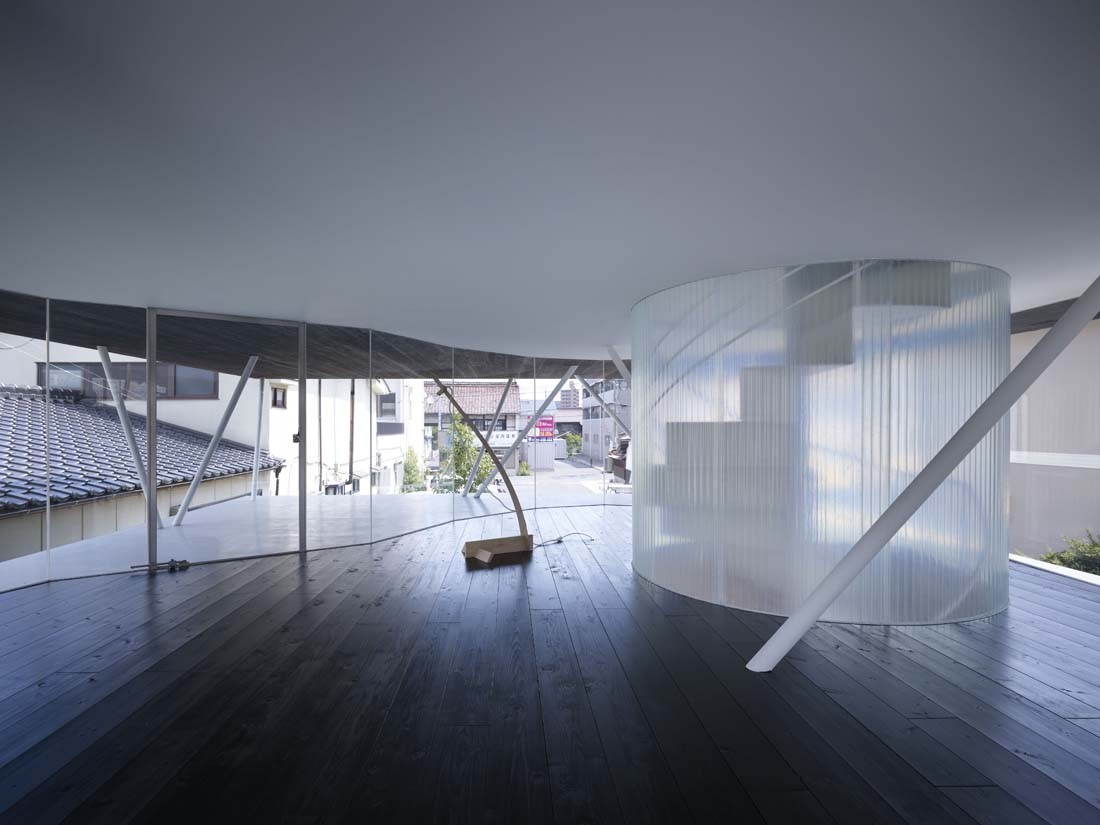Charred Cedar House on Stilts
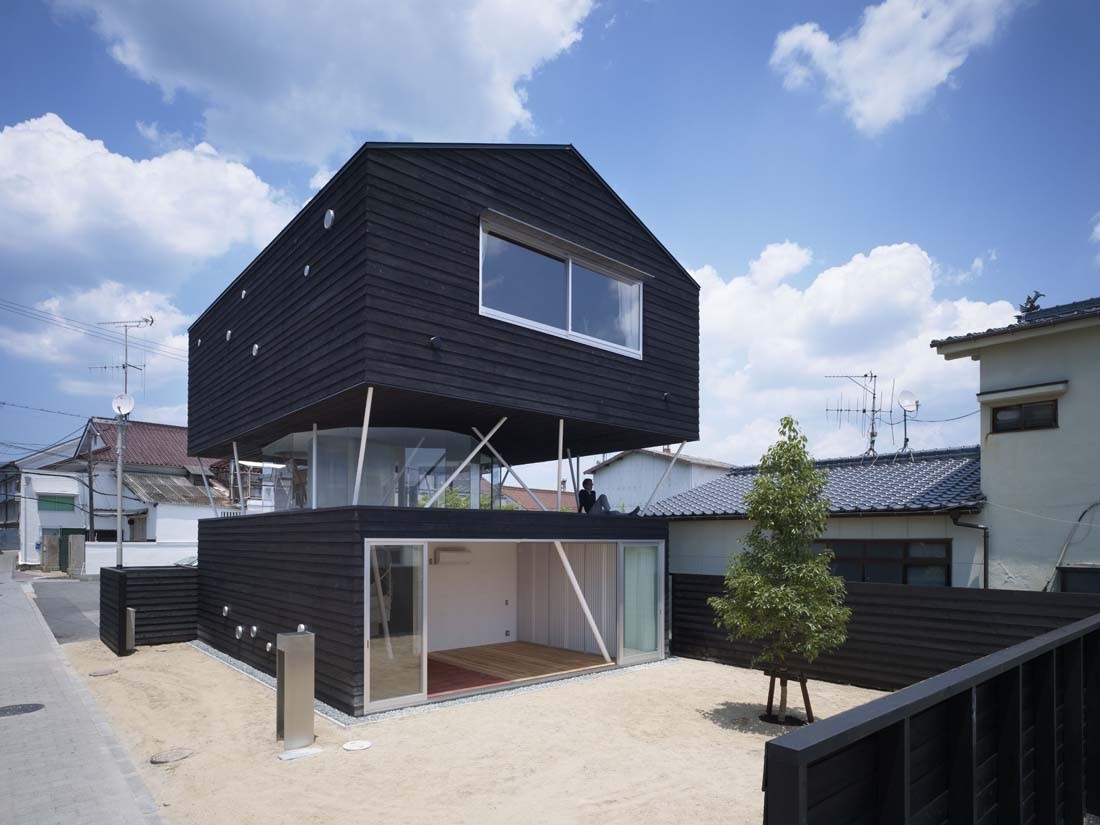
Perhaps it is too simple to say that the Japanese have mastered the architectural art of merging the subtle with the sublime… but this contemporary home is yet another amazing example of contemporary house architecture that breaks with convention while maintaining tradition. The few critical design moves used to make something sensational and modern also conversely conform to traditional patterns in unexpected ways.
The structure starts with conventional a-frame plan and regional charred-cedar material – but changes dramatically with the addition of stilts that raise the upper stories above the rest and create room for a full wrap-around deck.
The black siding and roofing of “Charred Cedar House” contrasts sharply with the thin white-painted steel supports – and the black boxes above and below the void in the center likewise are likewise the inverse of this empty interstitial outdoor deck space.
Piercing through these layers is a set of spiral staircases that also serve as light wells, bringing both artificial and daytime light up and down through them to spectacular effect. The white versus black (versus natural wood) theme also plays out in different ways from one story to the next, with dark-stained floors and contrastingly smooth white ceiling surfaces to reflect light.
Conventional Japanese sliding doors serve to maintain an open flow on the first floor between inside and out while other traditional spatial strategies specific to Japan are found throughout the plan. Nonetheless, there is no mistaking this for a historical house – designed by NAF Architects (photos by Noriyuki Yano) even though it does blend in a strange and compelling way with its surrounding neighborhood.
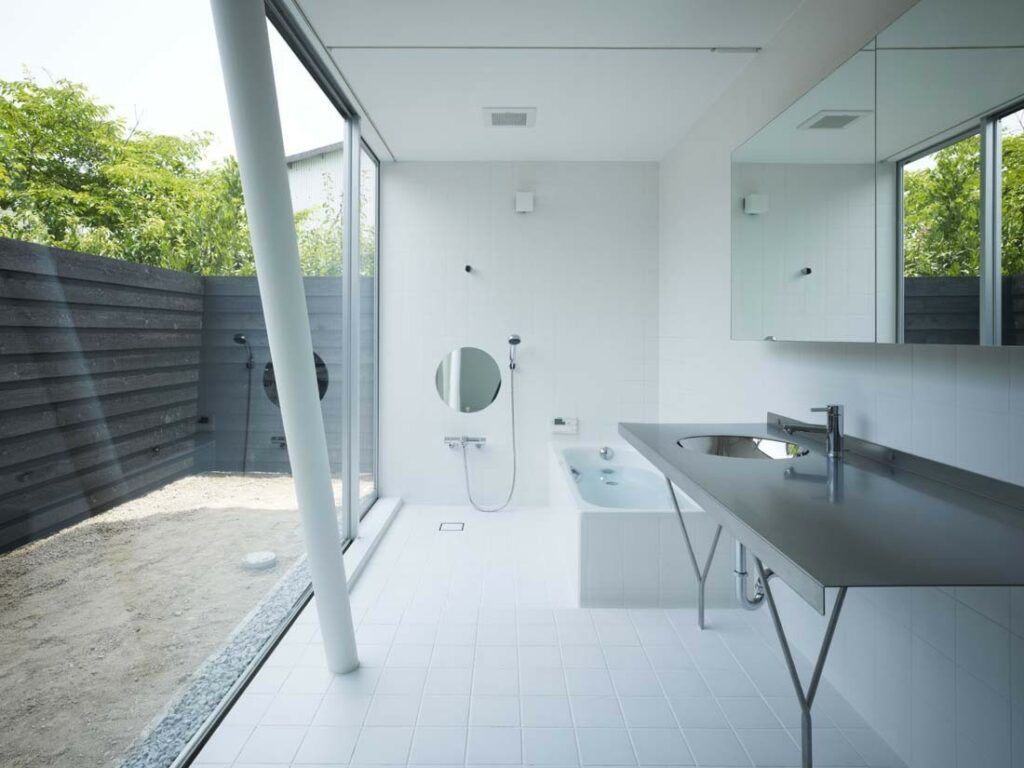
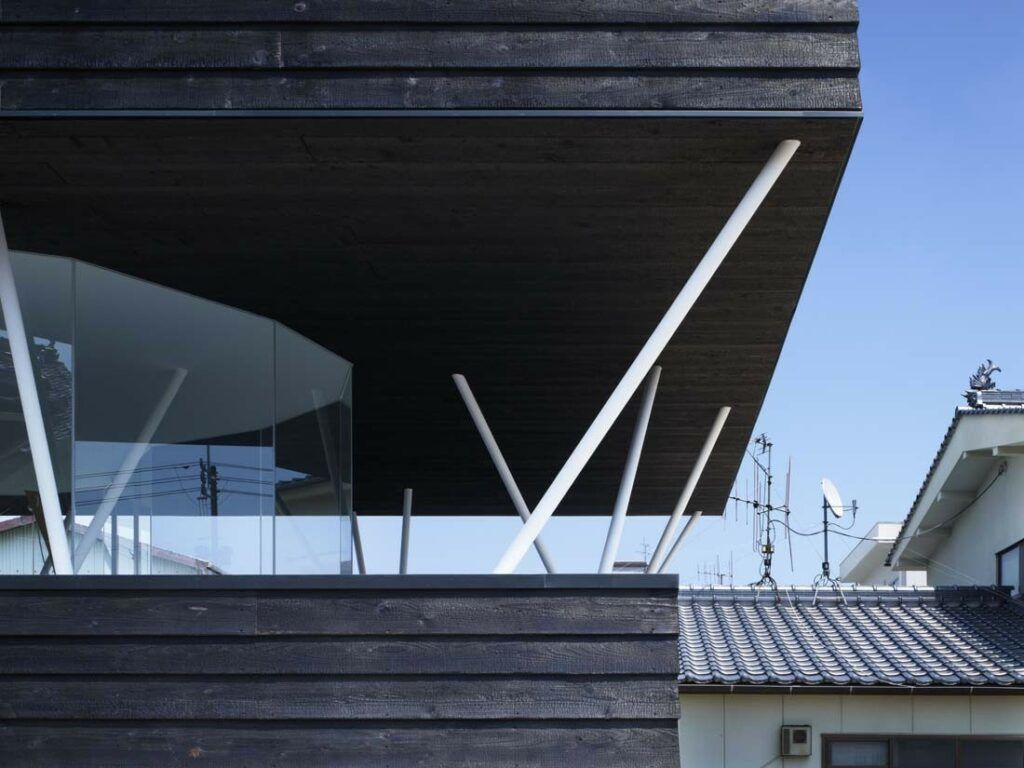
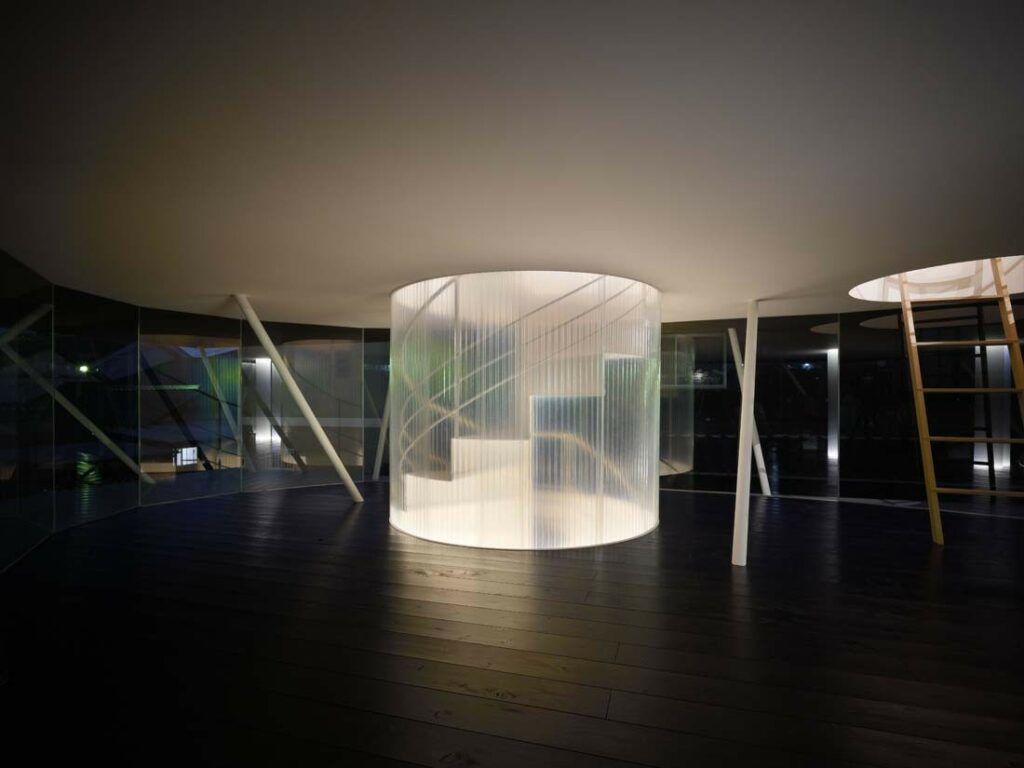
“Each layer of the house has different degrees of visible, physical and social accessibility from the outside which simply cannot be measured by the composition of the three layers. The complexity of the relations within the house offers various options for relations to the society.”






